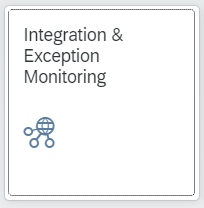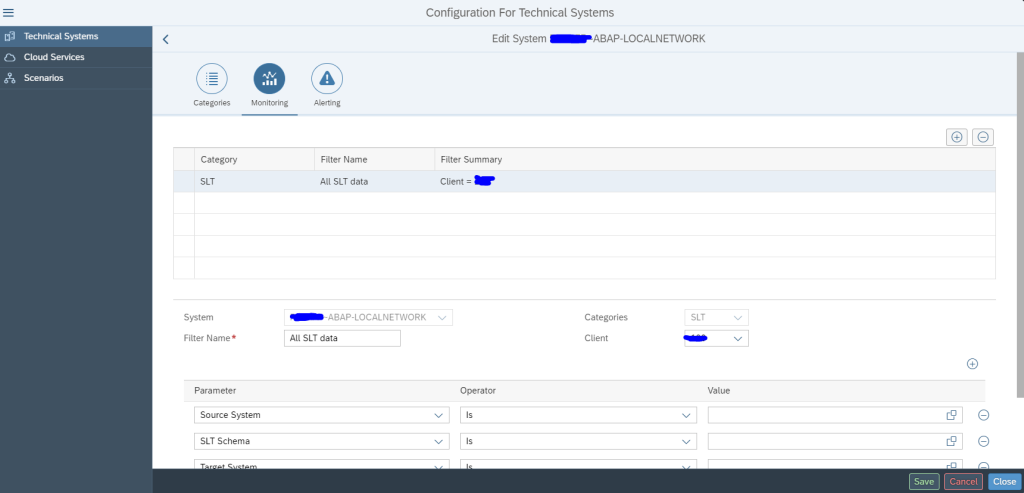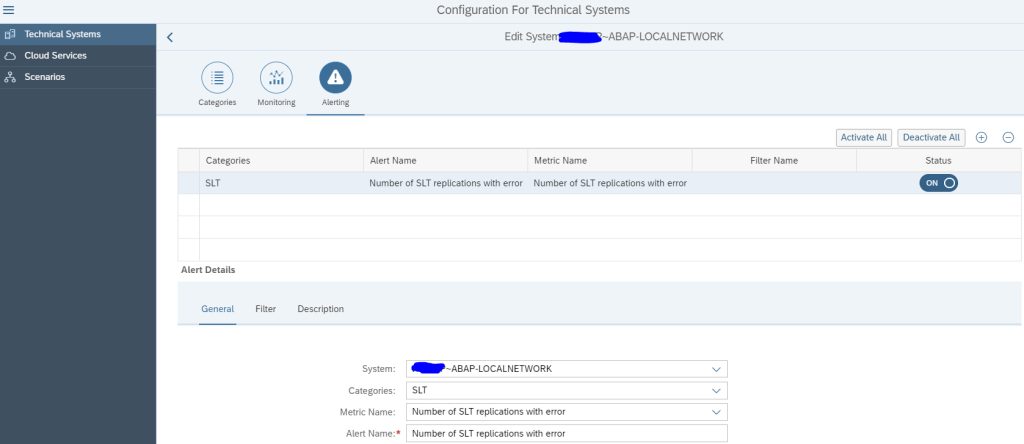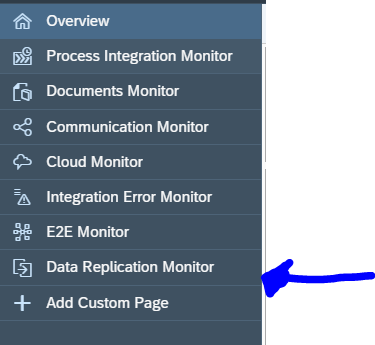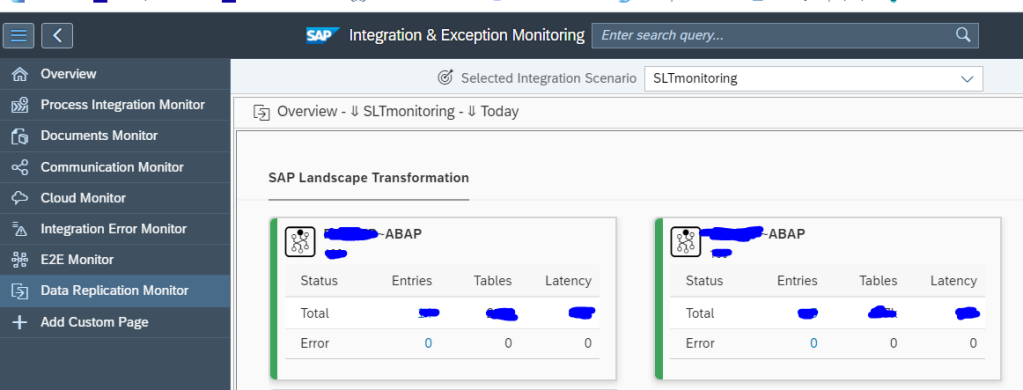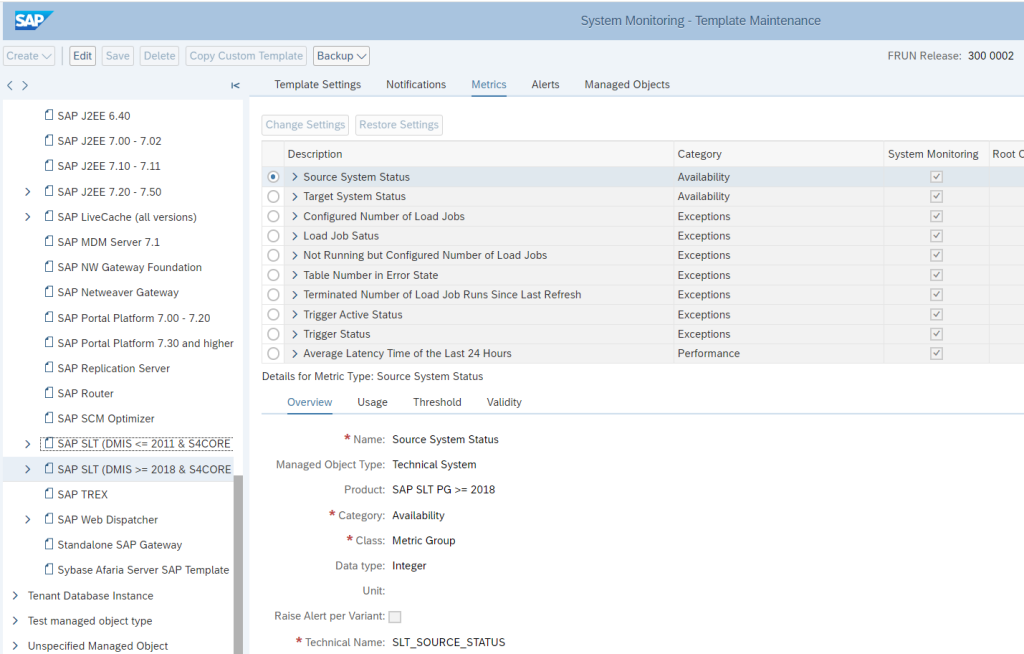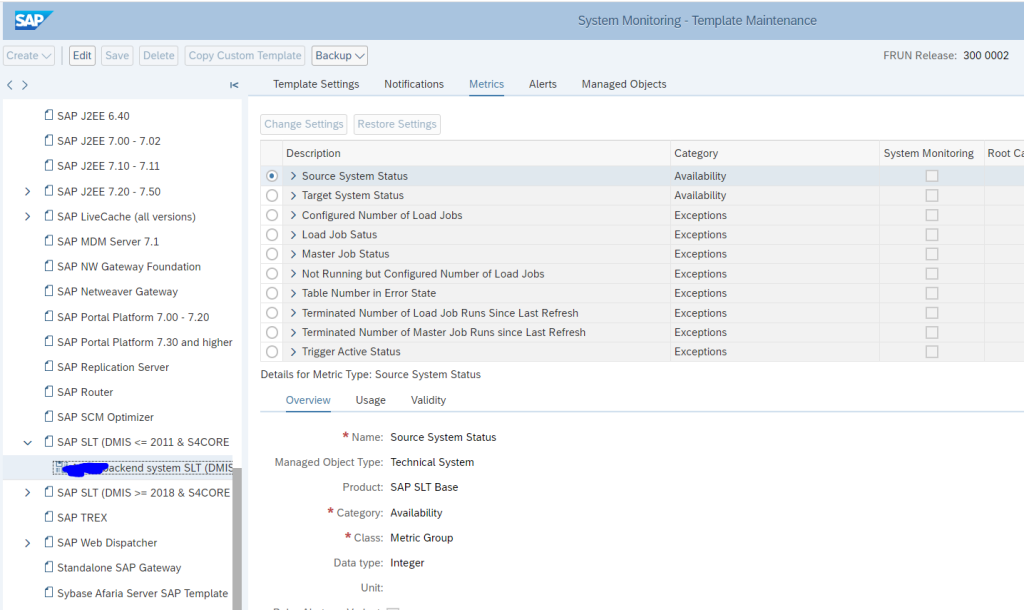This blog will focus on monitoring on SLT systems. These systems are mainly used to replicate data from source systems like ECC and S4HANA towards target systems like Enterprise HANA and HANA cloud.
Monitoring productive SLT systems
When monitoring a productive system, you will need to finetune the monitoring templates for:
- ABAP 7.10 and higher Application template, for the ABAP application
- ABAP 7.10 and higher Technical instance template, for the ABAP application servers
- System host template
- Database template
ABAP APPLICATION TEMPLATE
Make sure you cover in the ABAP application template the following items:
Availability:
- Message server HTTP logon
- System logon check
- RFC logon check
- License status
- Certificates expiry
- Update status
Performance and system health:
- Critical number ranges
- SICK detection
- Dumps last hour
- Cancelled jobs last hour
Security:
- Global changeability should be that the system is closed
- Locking of critical users like SAP* and DDIC (see blog)
Fine tune the metrics so you are alerted on situation where the system is having issues.
SLT uses far more background and dialog processes than a normal system. It is basically continuously busy processing records.
SLT DMIS template for SLT system
For SLT systems, apply the SLT DMIS template:
In the SLT system itself, make sure job /1LT/IUC_HEALTH_C with program R_DMC_HC_RUN_CHECKS runs. This will collect data that is needed for SLT itself, but which is also re-used by SAP Focused Run.
OSS notes to apply and check:
Anyhow you should make sure to regularly apply the notes for the DMIS component. See this blog.
SLT DMIS dummy template backend system
For SLT to work, the DMIS component is installed in both the SLT system and the backend system. For the backend system SLT component, Focused Run will pick up the template as well. But this will not make any sense in monitoring, since it is the source system and not the SLT system.
For this reason, set up a dummy empty template with every monitoring item disabled:
Assign this dummy template to your backend system.
ABAP APPLICATION SERVER TEMPLATE
Make sure you cover in the ABAP application server template the following items:
Availability:
- Local RFC logon test
- Local HTTP logon test (if any BW web scenario is used)
- Local Logon test
- Message server disconnects (see blog)
Application server performance and health:
- Amount of critical SM21 messages
- No more free work processes (see blog)
- Update response times
You can consider to setup extra custom metrics for the application servers:
System host template
For system host the regular CPU, memory, disc template is sufficient. Finetune the thresholds to your comfort level.
Database template
Important items of the database template:
- Database availability
- Database health checks
- Backup
Functions monitoring
Next to the availability and performance mentioned above, check also for monitoring certain functions:
